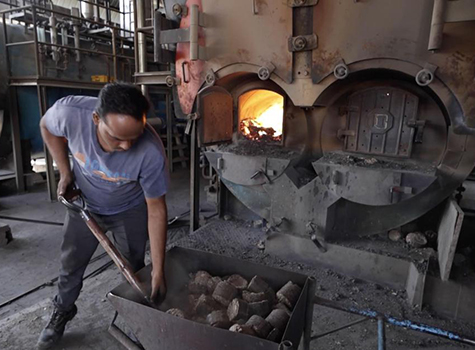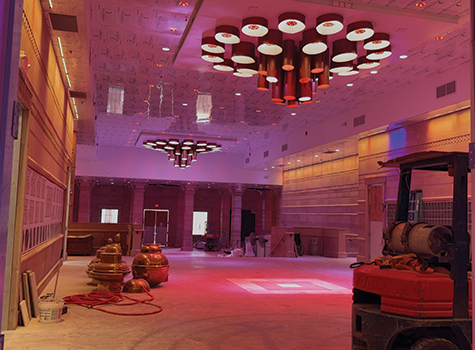By Dilip Barman
By the time this issue of Saathee is published, the 89th season of the American Dance Festival will have concluded its main run with an outdoor component at the NC Museum of Art in Raleigh forthcoming. I’ve seen a number of impactful performances.
As with all performing arts, it has been a rocky return to live shows. I’ve been pleased with ADF – they have encouraged masking and a significant percent, maybe 60-70 percent, of the audiences at the shows that I have attended have been masked. If you haven’t been to shows this season, I encourage you to take advantage of the outdoor September shows.
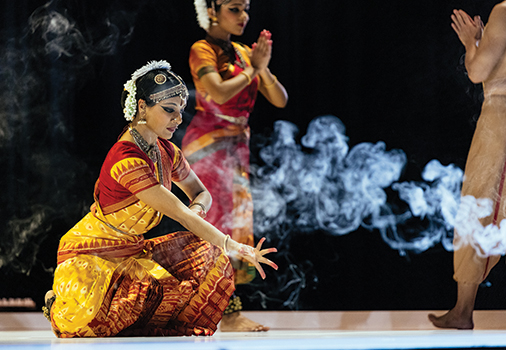
Ten years ago, we were blessed with a performance by Ragamala Dance, a Bharatanatyam ensemble based in Minnesota, and I shared a review in Saathee Magazine along with pictures then. Described by the New York Times as “an excellent companyâ€, it was founded by Ranee Ramaswamy, who shares artistic direction with her daughter Aparna. Aparna was named in 2010 by Dance Magazine as one of “25 to Watchâ€, the first time that a Bharatanatayam artist was so singled out. Aparna’s sister Ashwini also dances with Ragamala.
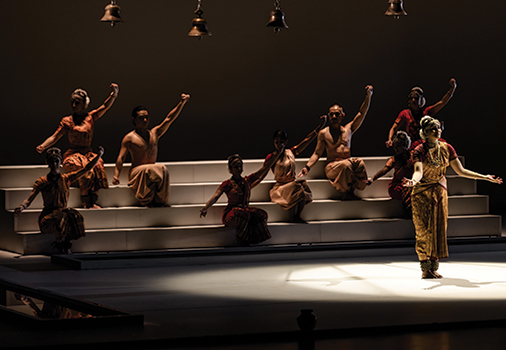
Because my paternal ancestry is rooted in the ancient Varanasi, I was particularly keen to see Ragamala’s new show, Fires of Varanasi. Inspired by the passing away of Ranee’s father, it was a beautiful modern treatment to the role that water, ritual, rites, and the city of Varanasi itself have played seemingly for eternity in death.
Elements of the performance that resonated with me included the repetitive rites, the abstracted rectangular pools representing the Ganges River, the music (which, at the cast party, I learned was composed with great difficulty remotely under pandemic curfew regulations), the unconventional white stage which offered stark, symbolic contrast, and the lighting. All of it, of course, was rooted in solid Bharatanatyam dance.
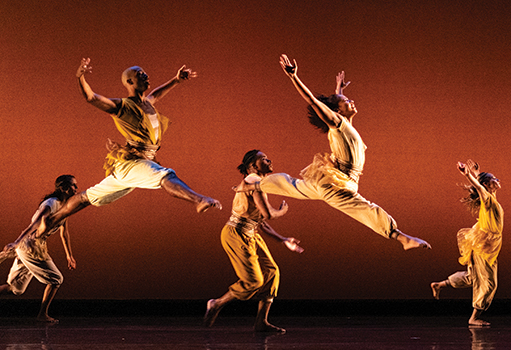
Some of the dances that Ragamala have created in the past include Yathra (Journey), about the trajectory of human life from birth to death (including the pioneering use of Indian cello), Dhvee (Duality) with both Indonesian and Indian interpretation of the Ramayana, Sthree set to a score by Dr. L. Subramaniam and inspired by the Tamil epic Silappathikaram (The Anklet), and Sacred Earth featuring the kolam “painted prayers†of Southeastern India and ancient wall paintings of the Western Indian Warli people (by the way, I recommend a visit to NCSU’s Gregg Museum of Art with an exhibit by Asheville photographer Martha Strawn featuring threshold creations like kolam). I published in Saathee in June 2012 an interview I had the pleasure of having with Ranee and Aparna Ramaswamy.
Summer travel precluded my attending all of the shows that I would have wanted to, but I did have the pleasure of seeing several. I was very pleasantly surprised by ShaLeigh Dance Works, a local troupe that I knew would be appealing. I like to see how modern dancers push the envelope and they did that by performing in a space I love, Durham’s Fruit, a former fruit and produce warehouse, and by offering attendees … blindfolds! The dance was meant to have audiences experience the artform the way those with various levels of visual limitations might. It was such an intriguing, innovative, and immersive idea!
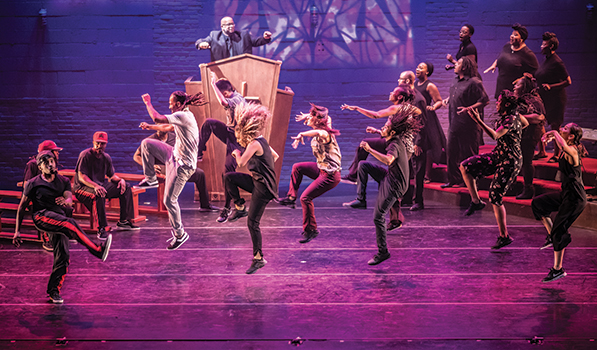
Rennie Harris Puremovement presented a “gospel House work†that dramatized the story of a man coming of age in the ‘hood trying to find himself while navigating between the stabilizing influence of the Black church and seeming allure of gang lifestyle.
I enjoyed the music and was happy that themes of conflicted youth in difficult circumstances were explored but wish that the dance were longer to allow particularly the main character to more fully be developed.
Abby Z and the New Utility was certainly modern dance. Performed at Duke’s beautiful von der Heyden Studio Theater in the Rubenstein Arts Center, it allowed everybody a first or second row seat (except for the few in the upper seating area) to a rigorous and demanding athletic demonstration of the sheer power of dance.
Paul Taylor Dance Company is one of my favorites and it did not disappoint. I am used to seeing them at larger venues like the Durham Performing Arts Center but none of the ADF shows were at DPAC this year. PTDC was somehow different in a smaller space of Duke’s Page Auditorium – maybe more intimate, maybe more muted – but the classical foundation and elegantly strong dancers made an irresistible evening as always. It was the third time that I have seen their frenzied Syzygy; this dance, I must say, really shines in a larger performance space.
They had enticing dances Cloven Kingdom and one that my teenaged daughter and I particularly liked, Hope is the thing with Feathers. This dance featured relatively plain costumery reflecting birds letting their environment (dance and not-subtly-bird-referencing music including clips of the Beatles’ Blackbird) shine through.
Don’t miss the outdoor September shows at the North Carolina Museum of Art. It features four consecutive days of performances. Info at AmericanDanceFestival.org
Note: All photographs courtesy of the American Dance Festival and used with permission.
Dilip Barman is a photographer, teacher, health coach, and computer scientist. Contact: [email protected]


